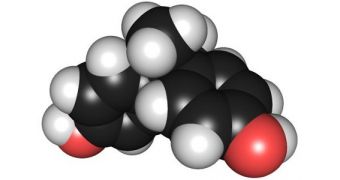According to the conclusions of a new scientific investigation from researchers at the University of Missouri, it would appear that exposure to even low-concentration doses of bisphenol A (BPA) causes organ development issues in the offspring of primates. This is just the latest in a growing body of works suggesting the this common chemical has extremely negative adverse effects.
In their experiments, MU scientists exposed pregnant primate females to minute amounts of BPA and then observed the development of their offspring in the womb. The reason why bisphenol A is so dangerous for multiple species is that it displays hormone-like properties when inserted in the body.
The reason why the international scientific community is so interested in its effects on humans and human analogs is that BPA is one of the most pervasive chemicals out there today. It can be found in a multitude of consumer products, from store receipts and dental composites to the lining of metal cans and plastic water or soda bottles.
Multiple studies have thus far determined that the hormone-like properties of bisphenol A are manifested throughout all age ranges in humans, from fetuses and infants, to children and adults. The effects are always the same and contamination is not singular, but ongoing. For this reason, some baby feeding bottle manufacturers have already renounced using BPA in their products.
“BPA is an endocrine disrupting chemical that has been demonstrated to alter signaling mechanisms involving estrogen, androgen and thyroid hormones,” explains Frederick vom Saal, who holds an appointment as the curators professor of biological sciences with the College of Arts and Science at the university.
“Previous studies in rodents have demonstrated that maternal exposure to very low doses of BPA can significantly alter fetal development, resulting in a variety of adverse outcomes in the fetus. Our study is one of the first to show this also happens in primates,” adds the investigator.
Details of the new study appear in a paper entitled “Bisphenol A (BPA) pharmacokinetics with daily oral bolus or continuous exposure via silastic capsules in pregnant rhesus monkeys: relevance for human exposures,” which was published in a recent issue of the journal Reproductive Toxicology.
“The very low-level exposure to BPA we delivered once a day to the rhesus monkeys is far less than the BPA levels humans are exposed to each day, which reflects multiple exposures. Our findings suggest that traditional toxicological studies likely underestimate actual human exposure and show, unequivocally, that biologically active BPA passes from the mother to the fetus,” vom Saal concludes.
The work was sponsored through a grant from the National Institute of Environmental Health Sciences (NIEHS), which is a part of the US National Institutes of Health (NIH).

 14 DAY TRIAL //
14 DAY TRIAL //